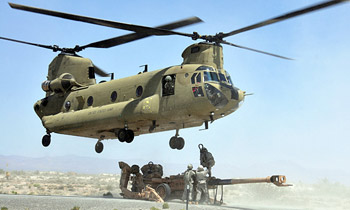INDIAN ARMED FORCES CHIEFS ON
OUR RELENTLESS AND FOCUSED PUBLISHING EFFORTS

SP Guide Publications puts forth a well compiled articulation of issues, pursuits and accomplishments of the Indian Army, over the years

I am confident that SP Guide Publications would continue to inform, inspire and influence.

My compliments to SP Guide Publications for informative and credible reportage on contemporary aerospace issues over the past six decades.
- Prime Minister witnesses 'Bharat Shakti' – a Tri-Services Firing and Manoeuvre Exercise in Pokhran, Rajasthan
- Interim Defence Budget 2024-25 — An Analysis
- Union Defence budget 2024
- Prime Minister Modi Commemorates Indian Navy Day in a Grand Ceremony
- Prime Minister Modi Flies in the LCA Tejas
- New Chapter in India-Italy Defence Ties
- Airpower beyond Boundaries
Indian Army's 15-year land warfare capability roadmap


The capabilities that it will be imperative to acquire include enhanced operational effectiveness of armoured and mechanised infantry fighting platforms, with emphasis on manoeuvrability, lethality, survivability and information dominance, the development the capacity to field a wired and net-connected infantry soldier (F-INSAS is only part of this) integrated with a battlefield management system and equipped with state-of-the-art weapons, the development of a comprehensive fire power and fire support system based on long-range artillery, rockets and missiles with high lethality, precision and mobility, to achieve a high degree of transparency in the battlefield by means of integrated space-based, airborne (including UAV mounted), heliborne and surface-based sensors with high resolution imagery and real-time flow of information at all levels, to enhance night fighting capability by provisioning of state-of-theart night vision devices (a task that successive Army chiefs have tried to address, but the gap is so huge, it will be years before all requirements are met), to move from a net enabled to a net centric armed force by integrating space, air and ground platforms.
Imperative would also be the ability to control cyberspace while ensuring information superiority for own forces. In addition to these: to achieve enhanced sensor-to-shooter synergy by integration of sensors with fire power resources at the disposal of the force, develop an effective air defence capability based on modern radar systems, advanced seekers and guidance-based surface-to-air missiles, gun systems and ammunition with advanced hit efficiencies, to develop a fully-integrated combat aviation fleet based on helicopters to form the aerial manoeuvre component of the force, duly supported by reconnaissance and logistics aerial platforms. The futuristic aerial platforms must comprise advanced avionics, state-of-the-art navigation and weapon systems. The aircraft must have high reliability and survivability in an electronically dense environment. To enhance mobility of own forces and deny/retard the same to the adversary. The capability of bridging gaps, both wet and dry, development of mine laying and recording technologies and countering adversaryís explosive devices would act as force multipliers, to develop a state-of-the-art chemical, biological, radiological and nuclear defence and protection capability, the capability to undertake protected operations in built up urban/ semi urban rural areas so as to achieve the military objectives with minimum casualties/collateral damage, to attain amphibious capabilities of designated forces with fighting platforms and support vehicles which will need to traverse over riverine and such like terrain, to evolve an agile, responsive, integrated and cost-effective logistics system through use of modern technology and management practices, in synergy with other services and the national industrial base.
The TPCR document also details the roadmap for missile capabilities. Here it talks about joint area missile defence involving the use of air defence assets of the three services in conjunction with the surveillance sensors of other agencies to detect, track, acquire and destroy incoming incoming theatre ballistic and cruise missiles. It encompasses the seamless flow of information on missile launch by specialised surveillance capabilities, through tracking by the weapon sensors to missile negation and destruction.
In terms of generic missile capabilities, the document lays out that the country's forces will need to have surface-to-air strike capabilities comprising both long-range and short-range surface-to-air missiles with capability to engage the low flying sea skimming missiles with integrated fire control systems, surface-to-surface strike capabilities comprising anti-ship SSMs, and land attack cruise missiles with fire-and-forget homing heads, telemetry systems for monitoring missile flight parameters are critical for operational preparedness and compact, cost-effective, state-of-the-art telemetry systems would go a long way in enhancing the combat efficiency of the armed forces.





